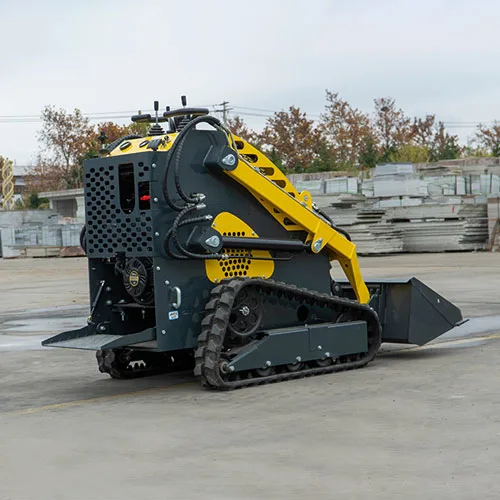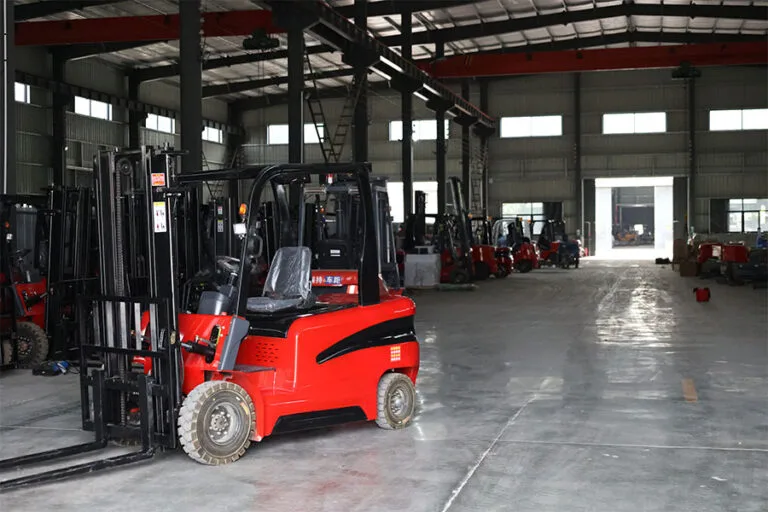Efficient Digging Starts with a Small Garden Excavator
I’m thrilled to have you here! Before we dive into the content, let’s stay connected. Join me on my social media platforms for more insights, community engagement, and regular updates. Here’s where you can find me:
📌 Facebook: Shandong Huaying International Trade Co., Ltd.
Now, let’s embark on this journey together. I hope you find the content here not only insightful and engaging but also valuable to your interests. Let’s learn, grow, and connect!
Table of Contents
Introduction


The skid steer loader slasher is a powerful attachment designed to make land clearing, brush cutting, and vegetation management easier and more efficient. However, despite its popularity and usefulness, there are several painful truths about the skid steer loader slasher that users often overlook or underestimate. Knowing these truths is essential for anyone considering this equipment for their projects. This blog dives deep into three major drawbacks or challenges of the skid steer loader slasher, helping you make an informed decision and optimize your use.
Truth 1: Skid Steer Loader Slasher Maintenance Can Be Costly and Time-Consuming
One of the most often overlooked realities when it comes to using a skid steer loader slasher is the significant maintenance it demands. While the attachment can dramatically boost productivity by rapidly clearing brush, grass, and small trees, the ongoing upkeep requires considerable time, effort, and financial investment. Many users underestimate these hidden costs, which can impact the overall value and ROI of the equipment.
Common Maintenance Issues with Skid Steer Loader Slasher
- Blade Wear and Tear: The blades on a skid steer loader slasher are its primary working parts and face constant contact with tough vegetation, rocks, and debris. Frequent use against thick brush and rugged terrain causes the blades to dull or chip, leading to less efficient cutting. If blades are not sharpened or replaced timely, this can cause additional strain on the hydraulic system and the skid steer loader itself, increasing fuel consumption and wear on other components.
- Hydraulic Leaks: Hydraulic power is essential for the slasher’s blade rotation and cutting action. However, the hydraulic hoses, fittings, and cylinders are vulnerable to leaks, especially in rough working conditions. A leak not only reduces performance but also poses environmental hazards and safety risks. Repairing hydraulic leaks can be expensive and may cause costly downtime during peak work seasons.
- Belt and Chain Adjustments: Depending on the slasher model, belts or chains are used to transfer power to the blades. These components tend to loosen, stretch, or wear down over time. Regular adjustments, lubrication, or replacement are necessary to keep the slasher operating smoothly. Failure to maintain belts or chains can lead to breakdowns, uneven blade rotation, and safety hazards.
Tips to Manage Maintenance Costs and Time
- Scheduled Inspections: Implementing a strict routine inspection schedule can help detect wear early before major failures occur.
- Proper Cleaning: After use, removing dirt, plant matter, and debris prevents corrosion and component clogging.
- Using Quality Replacement Parts: Investing in high-quality blades and hydraulic parts may cost more upfront but can extend the overall lifespan and reduce frequent replacements.
- Operator Training: Educating operators on proper handling can minimize unnecessary stress on the machine and reduce maintenance frequency.
Ultimately, while the maintenance costs and time commitment may seem like drawbacks, they are necessary investments to ensure long-term productivity and safety with your skid steer loader slasher. unexpected breakdowns but add to operational costs.
Truth 2: Skid Steer Loader Slasher Performance Is Limited by Terrain and Vegetation Types
Another painful truth about skid steer loader slashers is that their performance is highly dependent on the terrain they operate on and the type of vegetation they are tasked to clear. This limitation can often lead to frustration for users expecting the slasher to handle all environments with equal efficiency.
Terrain Challenges Affecting Skid Steer Loader Slasher Use
- Rocky or Uneven Ground: Skid steer loader slashers perform best on relatively flat, clear terrain. When operated on rocky or uneven ground, blades are more prone to damage such as chipping or bending. Additionally, uneven terrain causes inconsistent cutting height, leading to an uneven clearing job. Rocky ground can also increase wear on the skid steer loader’s tires or tracks, further escalating maintenance needs.
- Wet or Muddy Conditions: Operating a skid steer loader slasher in wet or muddy terrain reduces traction and machine stability. Reduced traction results in slower progress and more power needed to operate, increasing fuel consumption and operator fatigue. Additionally, wet conditions may cause clogging of the slasher deck with mud or plant residue, requiring more frequent cleaning to maintain cutting efficiency.
- Dense Woody Brush and Thick Trees: Although skid steer loader slashers excel at cutting grass, light brush, and saplings, they struggle with dense woody vegetation and large trees. Attempting to cut through very thick or hardwood trees can lead to blade damage and excessive strain on hydraulic components. In such cases, alternative equipment like forestry mulchers or heavier-duty brush cutters might be more appropriate.
Vegetation Restrictions and Overloading Risks
- Optimal Vegetation Types: The slasher is engineered to efficiently clear grasses, weeds, light brush, and young saplings up to a certain diameter. When used within these parameters, it can dramatically reduce land clearing time.
- Overloading and Mechanical Stress: Trying to push the slasher beyond its recommended capacity — such as cutting thick brush or large shrubs — results in overloading. This leads to overheating, hydraulic system stress, and accelerated wear on mechanical parts. Overloading also increases the risk of sudden equipment failure, which can be costly and dangerous.
Strategies to Optimize Terrain and Vegetation Use
- Pre-Clearing Assessment: Conducting a site assessment beforehand to identify terrain type and vegetation density helps determine if the skid steer loader slasher is suitable.
- Complementary Equipment Use: For challenging terrains or heavy vegetation, combining the slasher with other attachments or machines optimizes clearing efficiency.
- Adjust Cutting Height: Properly adjusting the cutting height for the terrain and vegetation type reduces blade damage and ensures consistent results.
Understanding these terrain and vegetation limitations is key to making the most out of a skid steer loader slasher while avoiding unnecessary wear and downtime.
Truth 3: Safety Risks and Operator Skill Requirements for Skid Steer Loader Slasher Use

Operating a skid steer loader slasher is not as straightforward as it might seem. A significant but often underappreciated truth is the safety risks involved and the level of operator skill required to use this attachment effectively and safely.
Operator Training and Skill
- Mastering Controls: The skid steer loader itself has complex controls, and adding a slasher attachment requires the operator to learn additional specifics such as hydraulic flow adjustments, blade engagement, and safe operating speeds.
- Experience Matters: Inexperienced operators might misuse the slasher by cutting too aggressively, operating at unsafe speeds, or neglecting terrain challenges, all of which can cause accidents or inefficient clearing.
- Continuous Learning: As conditions and equipment evolve, ongoing training is critical. Operators should stay updated on best practices and safety protocols through workshops or manufacturer-provided courses.
Safety Hazards Associated with Skid Steer Loader Slasher
- Flying Debris: One of the most common risks is debris being thrown by the rapidly spinning blades. Rocks, sticks, and cut vegetation can cause serious injuries to the operator or bystanders if proper protective measures are not in place.
- Hydraulic Failure: Unexpected hydraulic system failures, such as hose bursts or leaks, can cause sudden loss of blade control, posing safety risks and potential equipment damage.
- Blade Detachment or Malfunction: Mechanical failures that lead to blade detachment or malfunction can be catastrophic, emphasizing the need for regular inspection and maintenance.
- Unstable Terrain and Rollover Risks: Using the slasher on slopes, loose soil, or uneven ground increases the risk of skid steer loader rollovers, one of the most dangerous accidents in this work.
Best Practices to Enhance Safety
- Emergency Preparedness: Operators should be trained in emergency shutdown procedures and first aid.
- Use Personal Protective Equipment (PPE): Operators and nearby workers should wear helmets, safety glasses, gloves, steel-toed boots, and hearing protection.
- Establish Safety Zones: Ensure that bystanders maintain a safe distance from the operating area.
- Pre-Operation Checks: Always perform equipment safety inspections before starting work.
- Follow Manufacturer Guidelines: Strictly adhere to operating manuals and safety instructions.
Mid-Article Table: Skid Steer Loader Slasher Comparison of Key Features and Challenges
| Feature | Advantage | Common Challenge | Maintenance Frequency |
|---|---|---|---|
| Blade Material | Durable steel offers long cutting life | Blades dull quickly with heavy use | Every 50-100 operating hrs |
| Hydraulic System | Provides smooth blade operation | Prone to leaks and pressure loss | Inspect weekly |
| Terrain Compatibility | Works well on flat to mildly uneven terrain | Poor performance on rocky or muddy terrain | N/A |
| Vegetation Types | Ideal for grass, brush, saplings | Ineffective on thick trees and large shrubs | N/A |
| Operator Skill Requirement | Allows precise control and efficiency | Requires trained operators | Training ongoing |
This table summarizes the key features and challenges of skid steer loader slasher usage, highlighting the balance between advantages and pain points.
Additional Considerations When Using a Skid Steer Loader Slasher

Beyond the three main painful truths, other factors influence your experience with skid steer loader slasher attachments:
- Fuel Consumption: Using the slasher increases fuel consumption of the skid steer loader, impacting operating costs.
- Attachment Compatibility: Not all skid steer loaders are compatible with every slasher model, so checking specifications is important.
- Environmental Impact: Clearing vegetation with a slasher should be done responsibly to avoid soil erosion or habitat destruction.
Conclusion
While the skid steer loader slasher is a highly effective tool for land clearing and brush management, it is vital to acknowledge and prepare for its challenges. Maintenance demands, terrain limitations, and safety risks can all impact your project’s success. Understanding these painful truths ensures you invest wisely and operate safely, maximizing the value of your skid steer loader slasher.
FAQ
How often should I replace the blades on my skid steer loader slasher?
Blade replacement depends on use, but typically every 50-100 operating hours, or when you notice reduced cutting efficiency or visible damage.
Can I use a skid steer loader slasher on rocky terrain?
It is not recommended as rocky terrain can damage blades and reduce performance. For rocky areas, specialized attachments may be better.
What safety gear should operators use when running a skid steer loader slasher?
Operators should wear eye protection, gloves, steel-toed boots, and hearing protection to guard against flying debris and noise.
Is special training required to operate a skid steer loader slasher?
Yes, training ensures safe operation and efficient use. Many manufacturers or equipment providers offer training courses.
How can I reduce maintenance costs for my skid steer loader slasher?
Regular inspections, cleaning after use, proper blade sharpening, and avoiding overloading the slasher help reduce wear and repair expenses.



